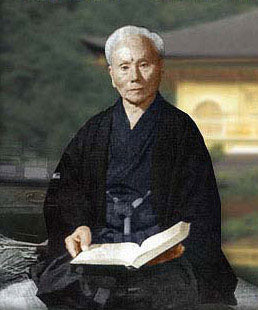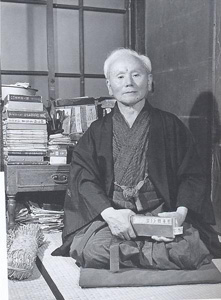History
Shotokan karate was developed in Okinawa, Japan, from various forms of martial arts by Gichin Funakoshi in the early 1900s.
Although a relative newcomer as a distinct style, its ancestry can be charted through more than a thousand years of constant evolution.
Today, it is one of four main traditional styles of karate and is by far the most widely practised around the world. It is routinely taught as part of the curriculum in Japanese schools.
You can read a more complete history of Shotokan karate on the excellent website, The Shotokan Way.
Shotokan karate
The study of karate falls into three broad categories.
Kihon: learning the 'basics': punches, blocks, kicks and stances. Practising the basics will form part of your training for as long as you are a student of karate. Even the Grand Masters practise their basics.
Kata: a series of moves put together from the basic moves learned in kihon. There is a different kata to study at every coloured-belt level and 26 katas in total. Find out more about Shotokan katas here.
Kumite: Sparring with an opponent (don't worry - in training, this is done in a very controlled and safe setting).
Philosophy
The core philosophy - or niju kun - of Shotokan karate was set out by Ginchin Funakoshi in a book, published in 1938, called "The 20 Guiding Principles of Karate".
The 20 Guiding Principles of Karate
- Karate-do begins and ends with rei.
- There is no first strike in karate.
- Karate stands on the side of justice.
- First know yourself, then know others.
- Mentality over technique.
- The mind must be set free.
- Calamity springs from carelessness.
- Karate goes beyond the dojo.
- Karate is a lifelong pursuit.
- Apply the way of karate to all things. Therein lies its beauty.
- Karate is like boiling water; without heat, it returns to its tepid state.
- Do not think of winning. Think, rather, of not losing.
- Make adjustments according to your opponent.
- The outcome of a battle depends on how one handles emptiness and fullness (weakness and strength).
- Think of the opponent's hands and feet as swords.
- Kamae is for beginners; later, one stands in shizentai.
- Perform kata exactly; actual combat is another matter.
- Do not forget the employment of withdrawal of power, the extension or contraction of the body, the swift or leisurely application of technique.
- Be constantly mindful, diligent, and resourceful, in your pursuit of the Way.

Master Gichin Funakoshi: 1868-1907

Master Funakoshi's "Tekki"

Gichin Funakoshi
The "father" of Shotokan karate
Find out more
KUGB
Find out more about the Karate Union of Great Britain.